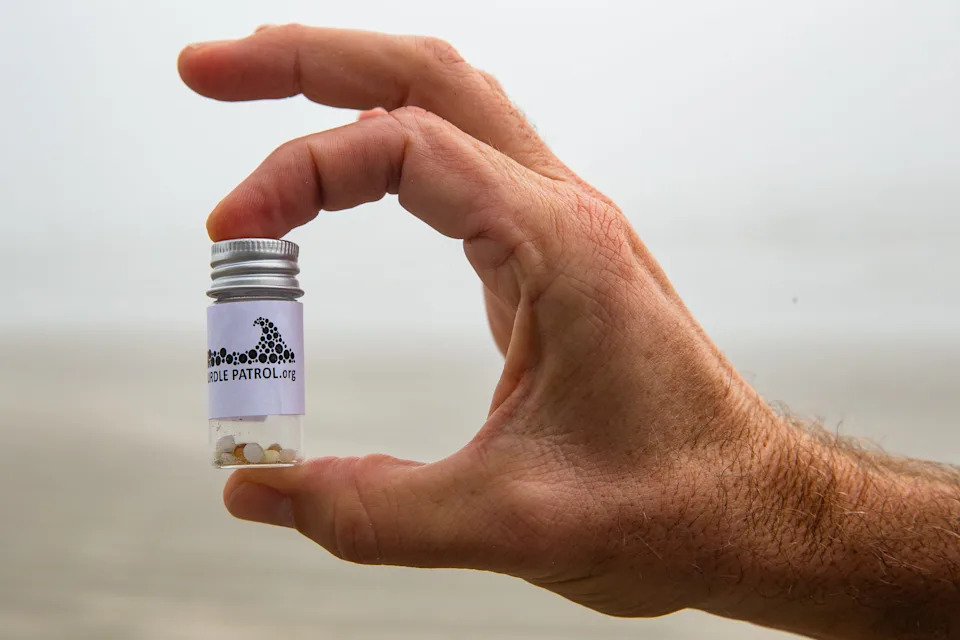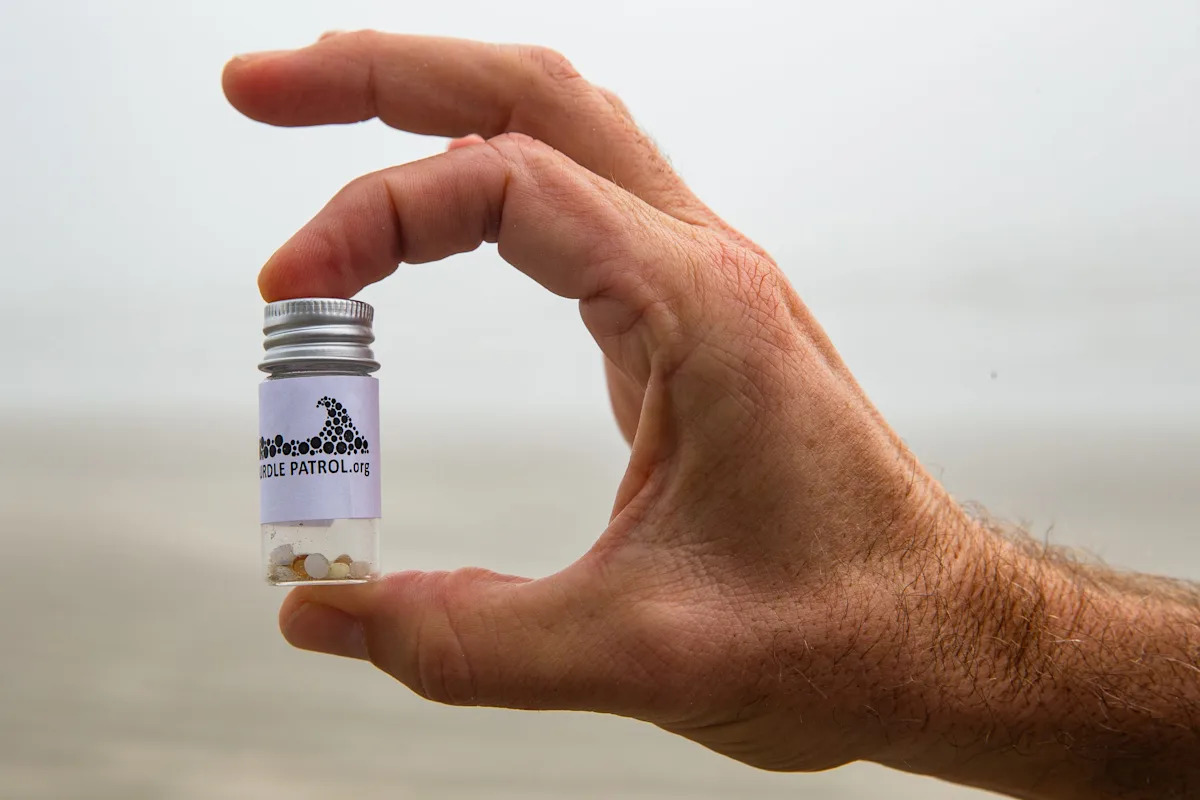A new study has identified Texas as the likely source for nurdle plastic pollution on Texas and Mexico beaches.
The study was led by a University of Texas Marine Science Institute graduate student, Jordan Cisco. The team analyzed more than 700 samples collected in areas spanning from Houston to the Yucatan Peninsula from 2021 to 2024.
“Identifying the source is the first step toward solving the problem,” Cisco said in a news release. “This kind of source-tracking can be applied globally to help pinpoint pollution origins and inform cleanup strategies.”
Nurdles are small resin pellets used as raw materials in plastic manufacturing. They’re about the size of a lentil. Since 2018, many Coastal Bend and Corpus Christi residents have been concerned about nurdle pollution.
Beachgoers notice larger pieces of pollution, bottles and debris strewn along the coast. But nurdles, mixed in with seaweed and sand, might escape their notice.

Jace Tunnell, Mission-Aransas National Estuarine Research Reserve Director, displays nurdles collected near the Horace Caldwell Pier on Nov. 29, 2022 in Port Aransas, Texas.
The Nurdle Patrol began after a 2018 spill impacted Corpus Christi beaches. Through the citizen science project founded by Jace Tunnell, volunteers track how many nurdles they can find within a 10-minute period at a certain location.
“The biggest impact is definitely to wildlife,” Tunnell said. “Birds eat these. Sea turtles have been documented eating these, as well as fish.”
Nurdles can clog intestines, starving animals by preventing them from eating.
In 2019, a shrimper won a $50 million settlement against Formosa Plastics Corp. for plastic pellet pollution in Matagorda Bay, the largest sum ever awarded in a civil lawsuit under the Clean Water Act. The monies are being used to support environmental mitigation projects and initiatives in the Matagorda Bay and San Antonio Bay ecosystems through the Matagorda Bay Mitigation Trust.
The new study, published in Environmental Research Letters in October, included chemical analysis and numerical modeling to determine the source of nurdles collected along Gulf coastlines.
Stopping at the high-tide or wrack line at locations across Texas and Mexico, samplers spent 10 minutes collecting nurdles from a 1-meter square grid. The nurdles were sent to the University of Texas Marine Science Institute at Port Aransas for analysis.
Texas is a global leader in plastics production. Places like Galveston had a high concentration, but nurdles were found at sites spanning the coastline.
The nurdle samples found in Texas were primarily fresh and white, while the samples collected in Mexico were more often yellow and weathered. Color isn’t a perfect indicator of degradation, but further analysis supports the idea that the nurdles found in Mexico were older.
Nurdles from the Yucatan Peninsula showed the highest oxidation levels, which indicates advanced degradation. The Texas samples showed a wider diversity in weathering. Samples from Central Mexico fell in between the Yucatan and Texas in oxidation. Oxidation changes occur as nurdles age in the marine environment.
Additionally, modeling of current and wave conditions show that nurdles are generally transported southward, though extreme weather events can disrupt the pattern.
All of this indicates that Texas is a likely source of plastic pollution to Mexican coasts, not the other way around.
In the past several sessions of the Texas Legislature, there have been several attempts to pass new legislation to mitigate pollution. This spring, bills were introduced in both the Texas Senate and Texas House of Representatives to require facilities to monitor for preproduction plastics in nearby waters and to conduct a monthly spill audit, but the measure didn’t make it out of committee.
Pellets spill out onto the ground at manufacturing sites and escape throughout the transportation process. Rain and stormwater wash the nurdles into lakes, streams and bays. Eventually, nurdles often end up on beaches.
Tunnell said that people can get involved by learning how to identify and collect nurdles. More information is available at nurdlepatrol.org.
New report shows mineral fuels exports make up bulk of Port of Corpus Christi trade value
Here’s how Texans can apply to college for free Oct. 13-19
Here’s how the drought impacts Corpus Christi schools, university athletic fields
Bringing Baffin Back: How nature-based solutions could improve South Texas water quality
This article originally appeared on Corpus Christi Caller Times: Study points to Texas as source of nurdle pollution in Mexico

